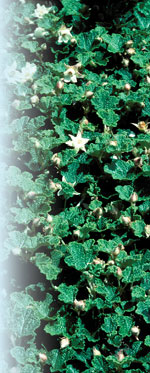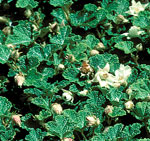Creeping Raspberry Groundcover
go.ncsu.edu/readext?235937
en Español / em Português
El inglés es el idioma de control de esta página. En la medida en que haya algún conflicto entre la traducción al inglés y la traducción, el inglés prevalece.
Al hacer clic en el enlace de traducción se activa un servicio de traducción gratuito para convertir la página al español. Al igual que con cualquier traducción por Internet, la conversión no es sensible al contexto y puede que no traduzca el texto en su significado original. NC State Extension no garantiza la exactitud del texto traducido. Por favor, tenga en cuenta que algunas aplicaciones y/o servicios pueden no funcionar como se espera cuando se traducen.
Português
Inglês é o idioma de controle desta página. Na medida que haja algum conflito entre o texto original em Inglês e a tradução, o Inglês prevalece.
Ao clicar no link de tradução, um serviço gratuito de tradução será ativado para converter a página para o Português. Como em qualquer tradução pela internet, a conversão não é sensivel ao contexto e pode não ocorrer a tradução para o significado orginal. O serviço de Extensão da Carolina do Norte (NC State Extension) não garante a exatidão do texto traduzido. Por favor, observe que algumas funções ou serviços podem não funcionar como esperado após a tradução.
English
English is the controlling language of this page. To the extent there is any conflict between the English text and the translation, English controls.
Clicking on the translation link activates a free translation service to convert the page to Spanish. As with any Internet translation, the conversion is not context-sensitive and may not translate the text to its original meaning. NC State Extension does not guarantee the accuracy of the translated text. Please note that some applications and/or services may not function as expected when translated.
Collapse ▲
‘Emerald Carpet’
Robert E. Lyons©
Perfect for hot, dry, erodible slopes or a ditch where moisture fluctuates, this groundcover thrives in difficult spots other plants can not tolerate. Rubus hayata-koidzumii, commonly known as creeping raspberry, is often listed incorrectly as Rubus calycinoides or Rubus pentalobus.
From Taiwan, this ground cover has delicious, aggregate fruits that range from yellow to salmon to red. It grows 1 to 3 inches tall, with crinkly, deep-green leaves providing needed texture in lightly shaded areas. White flowers are borne in mid-summer, but they are generally lost in the foliage and not prominent. The plant quickly forms a dense carpet. In the fall and winter, foliage transforms to subtle rusts and pinks. The groundcover is aggressive, but not invasive. It will not climb trees or smother nearby shrubs and can be controlled easily with an edger. Space creeping raspberry plants 4 to 6 feet apart, allowing them plenty of room.
Creeping raspberry adapts well to containers and tumbles easily over rock walls, providing a “spilling over” effect. Bulbs or other perennials are able to pop up through the foliage to create interesting compositions.
‘Emerald Carpet’ forms a low, dense, evergreen groundcover bearing textured, dark green leaves through the growing season. In the cooler months these leaves are blushed with burgundy tones. ‘Golden Quilt’ is a branch sport that bears striking golden-yellow leaves that are especially prominent on the new growth of the season.

‘Emerald Carpet’
Robert E. Lyons©
This cultivar is easily found in the Lath House and the Klein-Pringle White Garden at the JC Raulston Arboretum (JCRA) at NC State University. ‘Golden Quilt’ is a branch sport from one of the clones found at the JCRA. This cultivar bears striking golden-yellow leaves and is especially prominent on the new growth of the season. Look for it in the bed that slopes down from the east side of the Ruby C. McSwain Education Center, just up from the Manooch Cascade.
Darrell Blackwelder


